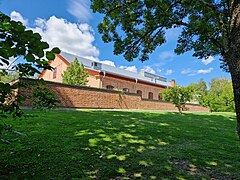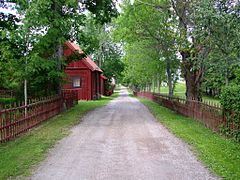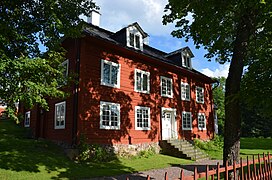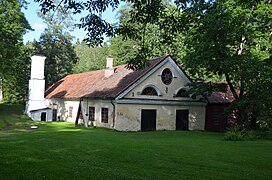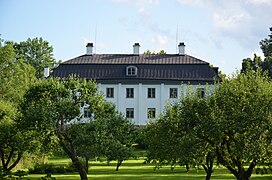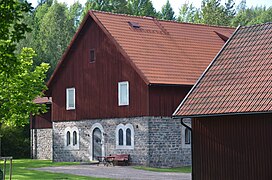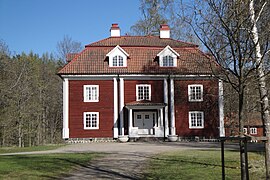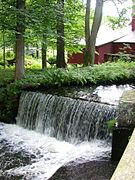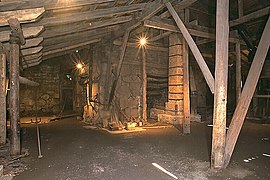Engelsberg Ironworks
| UNESCO World Heritage Site | |
|---|---|
 | |
| Location | Ängelsberg, Fagersta Municipality, Sweden |
| Criteria | Cultural: (iv) |
| Reference | 556rev |
| Inscription | 1993 (17th Session) |
| Area | 9.596 ha (23.71 acres) |
| Coordinates | 59°58′00″N 16°00′30″E / 59.96667°N 16.00833°E |
Engelsberg Ironworks (Swedish: Engelsbergs bruk) is an ironworks in Ängelsberg, a village in Fagersta Municipality in Västmanland County, Sweden. It was built in 1681 by Per Larsson Gyllenhöök (1645–1706) and developed into one of the world's most modern ironworks in the period 1700–1800. It is listed as a UNESCO World Heritage Site since 1993.
Name
[edit]Engelsberg Ironworks is named after Englika. Englika, who was born in Germany, began producing iron in Engelsberg in the 14th century.[1]
History
[edit]The history of iron production in the region dates back to at least 13th century. The local peasants both mined the ore and produced the iron using primitive furnaces.[2]
In the end of the 16th century more modern production methods were introduced in Engelsberg and production volumes increased substantially in the following decades.[2]
The mill, which historically belonged to the Västervåla parish and Norberg, was built in 1681[3] by the county sheriff Per Larsson Höök (1645–1706). By then, ironworking had already been carried out on the site for a long time by miners.[4]
Description
[edit]The preserved buildings include a manor house, the inspector's house and the smelting house with a blast furnace.[2]
UNESCO World Heritage Site
[edit]Engelsberg Ironworks is a UNESCO World Heritage Site. It was added to the list in 1993.[5] The UNESCO comments were:
Sweden's production of superior grades of iron made it a leader in this field in the 17th and 18th centuries. This site is the best-preserved and most complete example of this type of Swedish ironworks.
Gallery
[edit]-
Conference center
-
A road at Engelsberg iron works
-
The mansion with wings
-
The two slag stone towers
-
The west wing
-
The forge
-
The mansion from the garden side
-
Kitchen and pleasure garden
-
The old office
-
The archives of Axel Johnson Group
-
The old barn
-
The new office
-
The dam and blast-furnace
-
Rope railway for charcoal to the blast furnace
-
Casting house, blast furnace and air duct for preheated combustion air
References
[edit]- ^ "Världsarvet Engelsbergs bruk".
- ^ a b c "Engelsberg Ironworks".
- ^ "Ängelsberg - Uppslagsverk - NE.se". www.ne.se. Retrieved 2023-06-28.
- ^ "Engelsbergs bruk - Värlsdarvet - Fagersta kommun - turistinformation". 2010-08-12. Archived from the original on 2010-08-12. Retrieved 2023-06-28.
- ^ "Sweden".
External links
[edit]


